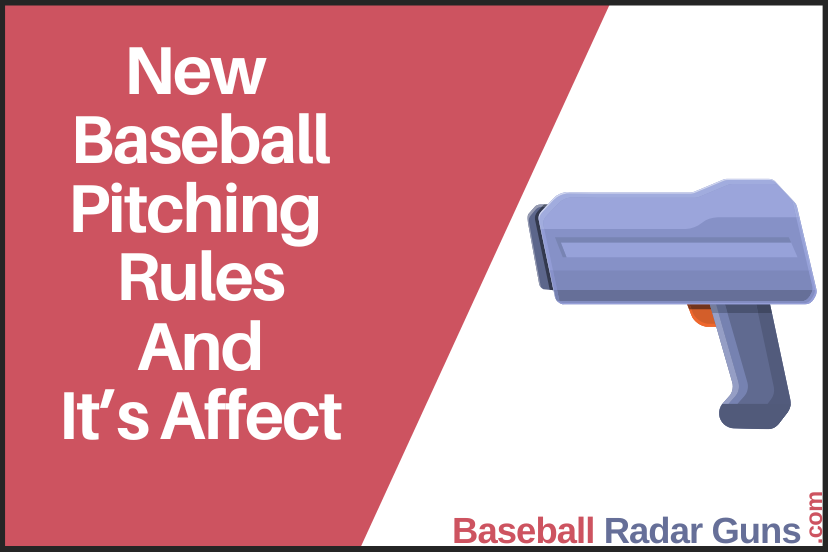New Baseball Pitching Rules And It’s Affect
*We may earn a commission for purchases made using our links. Please see our disclosure to learn more.
The landscape of baseball is shifting with the introduction of new pitching rules designed to keep the game engaging and fair. These changes come after extensive debates and analysis by the baseball community, focusing on improving the pace of play and ensuring that the sport remains exciting for its fans. Understanding these rules is crucial for players and enthusiasts alike.
One of the major updates is aimed at speeding up the game by limiting the time pitchers have between pitches. The pitch clock, a concept not new but now firmly implemented, requires pitchers to deliver the ball within a set time, or risk incurring penalties. This evolution in the rules is meant to cater to the modern audience’s preference for quicker, more dynamic gameplay.
Adapting to these rules means looking back at how pitching styles and strategies met past expectations and how they need to evolve now. Historically, pitchers have taken their time, methodically planning each throw—this shift challenges them to maintain performance under tighter constraints. It’s a balancing act, maintaining the rhythm and precision of traditional play while adjusting to the speeds the new rules demand.
Baseball authorities and rule-makers assert that these changes are essential for the sport’s longevity. They believe that keeping games shorter can increase viewership and enhance the overall experience. For players, understanding the rationale behind these rules is key, not just from a play perspective but in conditioning and practice routines as well.
Insights from seasoned experts, including quotes from league officials and veteran pitchers, shed light on the expected impacts and provide guidance. Their perspectives help to unravel the complex web of how these rules were conceived and implemented, offering a richer understanding that goes beyond the surface.
Impact of New Rules on the Game: An In-Depth Analysis
The introduction of new pitching rules has undeniably shifted the dynamics of baseball. This upheaval in the traditional pace has posed a challenge but also opened doors to innovative strategies. Teams have been quick to adjust, with managers crafting new tactics to align with the quicker tempo, aiming to maintain a competitive edge.
Players themselves have had to refine their approach, working rigorously to adjust their timing. This change influences everything from how pitchers collaborate with catchers to signal calls, to the defensive alignment on the field. It’s a fascinating evolution, reshaping how games are strategized and played.
Adapting to these changes isn’t just about players on the field. Fans, too, are experiencing a different rhythm to what they’re used to. Some embrace this modernization, appreciating the greater pace and intensity, while traditionalists yearn for the days of leisurely, drawn-out innings. This divergence in opinion is sparking discussion across baseball forums and social media, showcasing the game’s passionate and diverse fan base.
Statistical data offers a concrete view of these changes. Early into the implementation, pitcher’s performance metrics have shown variance, with some adapting seamlessly while others grapple with consistency. Game outcomes seem to lean towards fewer drawn-out matches, and some suggest this has impacted scoring trends.
As these rules settle in, I believe teams and players will continue honing their craft, perhaps setting new standards for baseball excellence. This period of adaptation is crucial, not only shaping the immediate future of the game but potentially influencing its path for years to come. Observing this shift provides valuable insights into the resilience and inventiveness inherent in professional baseball.
Health Implications for Pitchers: Increasing Stress and Injury Risk
The adaptation to new pitching rules has marked a challenging era for pitchers, as the pressure to perform within tightened time constraints intensifies. This transition isn’t just about strategy but stretches into the physical realm, potentially affecting the arm health of those on the mound.
Pitchers now face an elevated risk of injury due to alterations in their routines. The reduced recovery time between pitches demands quicker muscle responses, often leading to fatigue and a higher likelihood of strain or injury. Sports medicine experts point out that this accelerated pace can compromise a pitcher’s mechanics, increasing the chance of sustaining injuries such as rotator cuff tear or elbow strain.
Professional trainers emphasize the importance of revising training regimens to meet these demands. Teams are encouraged to focus on strengthening exercises that enhance endurance and flexibility, aiming to build resilience to the new game rhythm. This means pitchers should invest time in developing routines that incorporate dynamic warm-ups and sufficient cooldown periods, critical for minimizing wear and tear.
In discussions with health professionals, the consensus leans toward proactive injury management, highlighting the role of preventive health strategies and regular health assessments. Coaches are advised to monitor players closely, ensuring that any signs of potential injury are addressed promptly.
Long-term, the new rules may spark innovations in sports physiology and training methodologies in an attempt to protect players’ health. Still, adapting effectively now can safeguard careers and maintain the quality and integrity of the game.
As the baseball community continues to adjust, these insights provide a solid foundation to navigate the challenges posed by these new rules, prioritizing player health while embracing the evolving nature of the sport.




